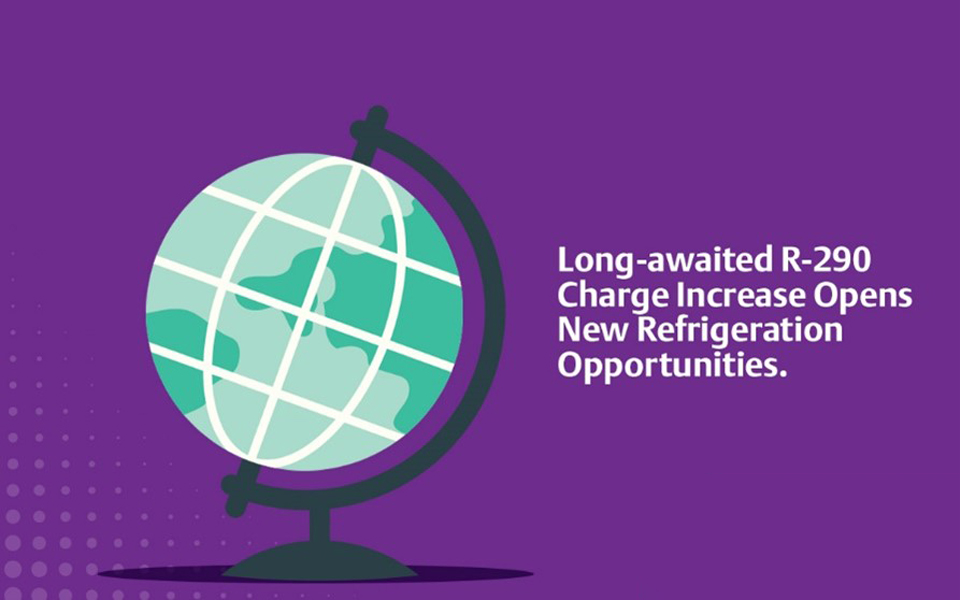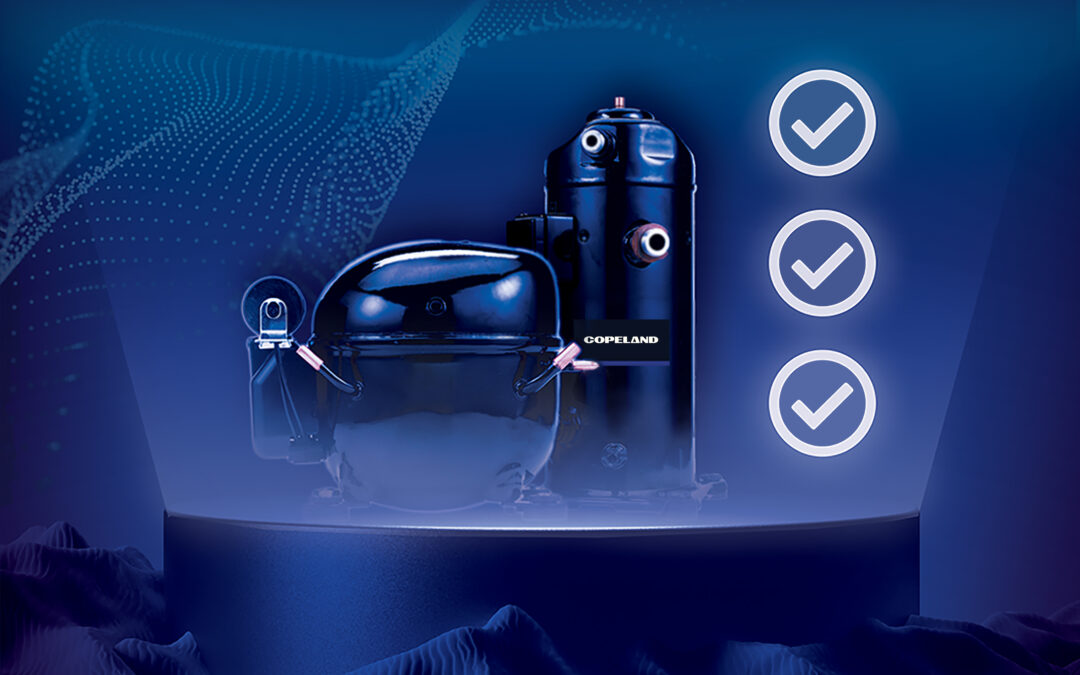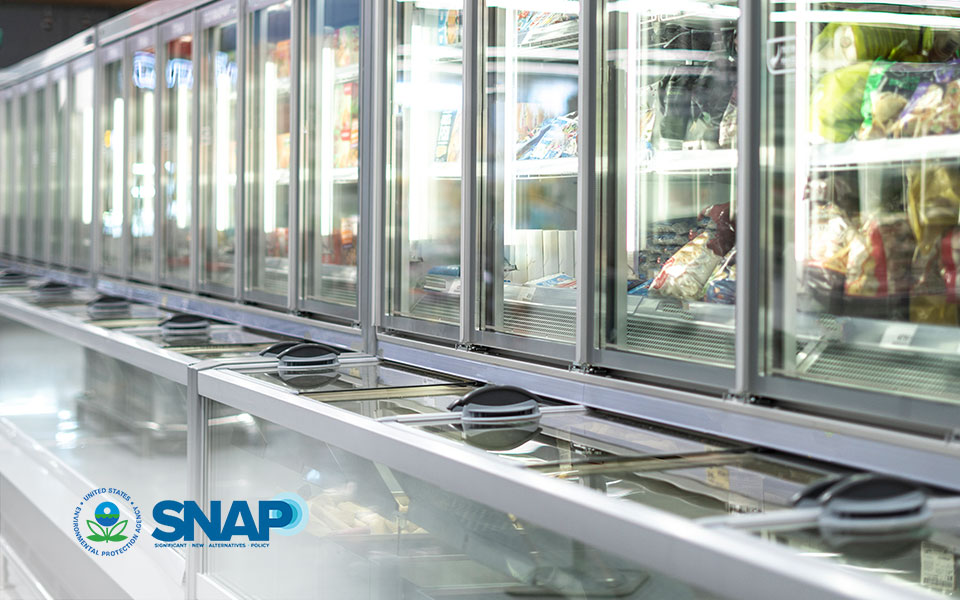Long-awaited R-290 charge increase opens new refrigeration opportunities

*On June 1, 2023 Emerson’s Climate Technologies business became a new standalone company – Copeland. Though our name has changed, we are building on more than a century of HVACR innovation and industry leadership, and Copeland continues to offer the same products, industry stewardship, and learning opportunities you’ve grown to trust. Information found on this webpage posted before June 1, 2023 may contain our old name or branding, but you can be at ease knowing it was created with the knowledge and expertise of Copeland.
For many years, the use of flammable refrigerants — such the A3 hydrocarbon R-290 (or propane) — has been a keen area of collective focus among the regulatory bodies governing refrigerant safety standards in commercial refrigeration. Offering excellent energy efficiencies and very low-global warming potential (GWP), this natural refrigerant has long been approved for use in applications with a maximum charge limit of 150 grams. Recently, the Underwriters Laboratory (UL) has approved the second edition of its UL 60335-2-89 standard, which includes higher R-290 charge limits that would expand its potential uses in commercial refrigeration.

To date, R-290’s 150 gram charge limit has hindered its wider adoption, narrowing its use to self-contained refrigeration cases or requiring the use of multiple condensing units to achieve higher capacities. The updated UL standard raises the charge limits on these commercial stand-alone displays based on whether they have an open or closed design:
-
- 500 gram maximum charge limit in open appliances (without doors)
- 300 gram maximum charge limit in closed appliances (with doors or drawers)
The 500 gram charge in open appliances raises the limit to 13 times the lower flammability limit (LFL) of R-290, while the 300 gram charge limit in closed appliances is eight times that of R-290’s LFL.
From an application design perspective, these higher charge limits will help original equipment manufacturers (OEMs) to increase system capacities while capitalizing on R-290’s high efficiency and low-GWP rating (GWP=3). For contractors, consultants and end users seeking to meet sustainability objectives or comply with refrigerant regulations, self-contained R-290 cases have become integral to their overall refrigeration strategies.
The first step toward wider adoption
The approved update to the UL 60335-2-89 standard is a key first step in the path toward wider R-290 adoption in commercial refrigeration. Although OEMs should begin planning their design cycles to enable these charge increases, other regulatory approvals will need to take place before higher-charge R-290 systems can be implemented throughout the U.S. and Canada. Pending approvals by other governing bodies include:
-
- Environmental Protection Agency’s (EPA) Significant New Alternatives Policy (SNAP) program
- American Society of Heating, Refrigeration and Air-Conditioning Engineers (ASHRAE) 15 safety standard for refrigeration systems
- Model Code updates in the upcoming code revision cycle
- State and local building code updates
For many U.S. industry insiders, the R-290 charge limit increase represents a logical next step in the progression of this natural refrigerant. Even prior to the UL approval, some sustainably minded operators have worked with their local building code administrators to implement systems with higher charges of R-290. In addition, a 500 gram R-290 charge limit has been in place in Europe since 2019, when the International Electrotechnical Commission (IEC) approved the increase under its IEC 60335-2-89 standard for self-contained commercial display cases.
R-290 ready compressors and condensing units
For years, Emerson has been producing compressors and condensing units, designed to deliver additional merchandising space for OEMs that develop self-contained R-290 refrigeration equipment. Our current R-290 compression portfolio includes:
-
- Copeland™ fixed speed hermetic reciprocating compressors
- Copeland variable speed hermetic reciprocating compressors and variable frequency drives (VFDs)
- Copeland fixed speed scroll compressors
- Copeland variable speed scroll compressors and variable frequency drives (VFDs)
- Copeland M-Line condensing units
- Controllers and system components approved for use with R-290
In addition, we’re currently expanding upon our R-290 qualified products to include the following compressors and condensing units, which will be available in 2022:
-
- Copeland horizontal fixed speed scroll compressors
- Copeland horizontal variable speed scroll compressor
- Corresponding condensing units utilizing new horizontal scrolls
Our R-290 product portfolio will be updated to accommodate the larger R-290 charges that will be adopted in the future.
Preparing for the future of R-290
After years of speculation, the commercial refrigeration industry in the U.S. can begin planning for the use of systems with larger charges of R-290 — enabling higher-capacity refrigeration while benefiting from R-290’s proven efficiencies and lower-GWP rating. Emerson is prepared to support this transition by developing partnering with OEMs and stakeholders to design in higher R-290 charge limit solutions to achieve regulatory compliance, fulfill their sustainability objectives, and reduce energy consumption.
While there are challenges to the implementation of propane, for environmentally forward-leaning companies, it is an increasingly attractive option. While new clarity in the regulatory environment should help to clear the way for wider R-290 adoption, the implementation of industry-wide safety practices will be necessary for propane to gain full adoption.
Propane is more combustible than some HFCs and there are a number of special-use considerations for using it in refrigeration applications. Some examples include, but are not limited to:
-
- Sealed/gas-tight or fire-/explosion-proof electrical components (UL471/EN 60079-15)
- Spark-free fan motors (brushless)
- Ventilation and leak sensor safety measures
- Special charge and leak detection processes during manufacturing
It’s also important to note that while propane has tremendous potential in commercial refrigeration, it is not a “drop-in” refrigerant. Equipment and components must be specifically designed for use with propane, as it requires a different compressor that will not always directly match the capacity or cost of existing HFC models.
Please reference any applicable product and application safety standards for the detailed list of considerations.

A2L refrigerant regulation updates: what you need to know today
by Jennifer Butsch | Efficiency & Refrigerant Regulations
Preparing for the approval and safe use of A2Ls in commercial refrigeration applications The move...

Address Efficiency Mandates with Compression Technologies
by Joe Summers | Efficiency & Refrigerant Regulations
Strategies for complying with DOE and ENERGY STAR® in self-contained and remote condensing units...

EPA SNAP Rule 26 Approves, Modifies Use Conditions for A2L and A3 Refrigerants
by Jennifer Butsch | Efficiency & Refrigerant Regulations
On May 28, the Environmental Protection Agency (EPA) pre-published its Significant New...
The post Long-awaited R-290 Charge Increase Opens New Refrigeration Opportunities appeared first on Copeland.